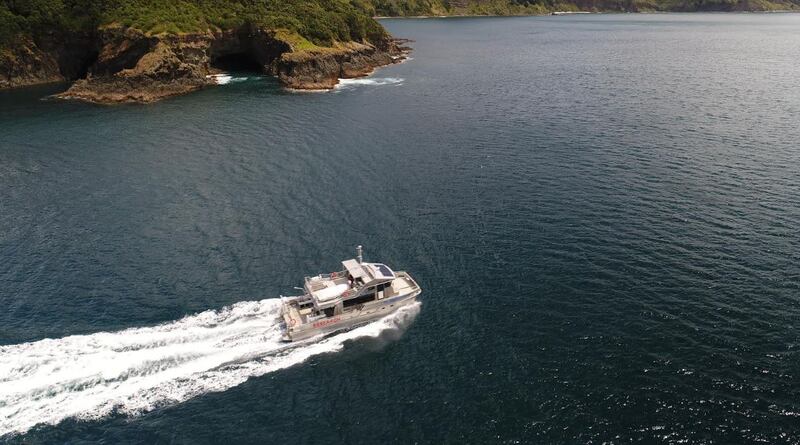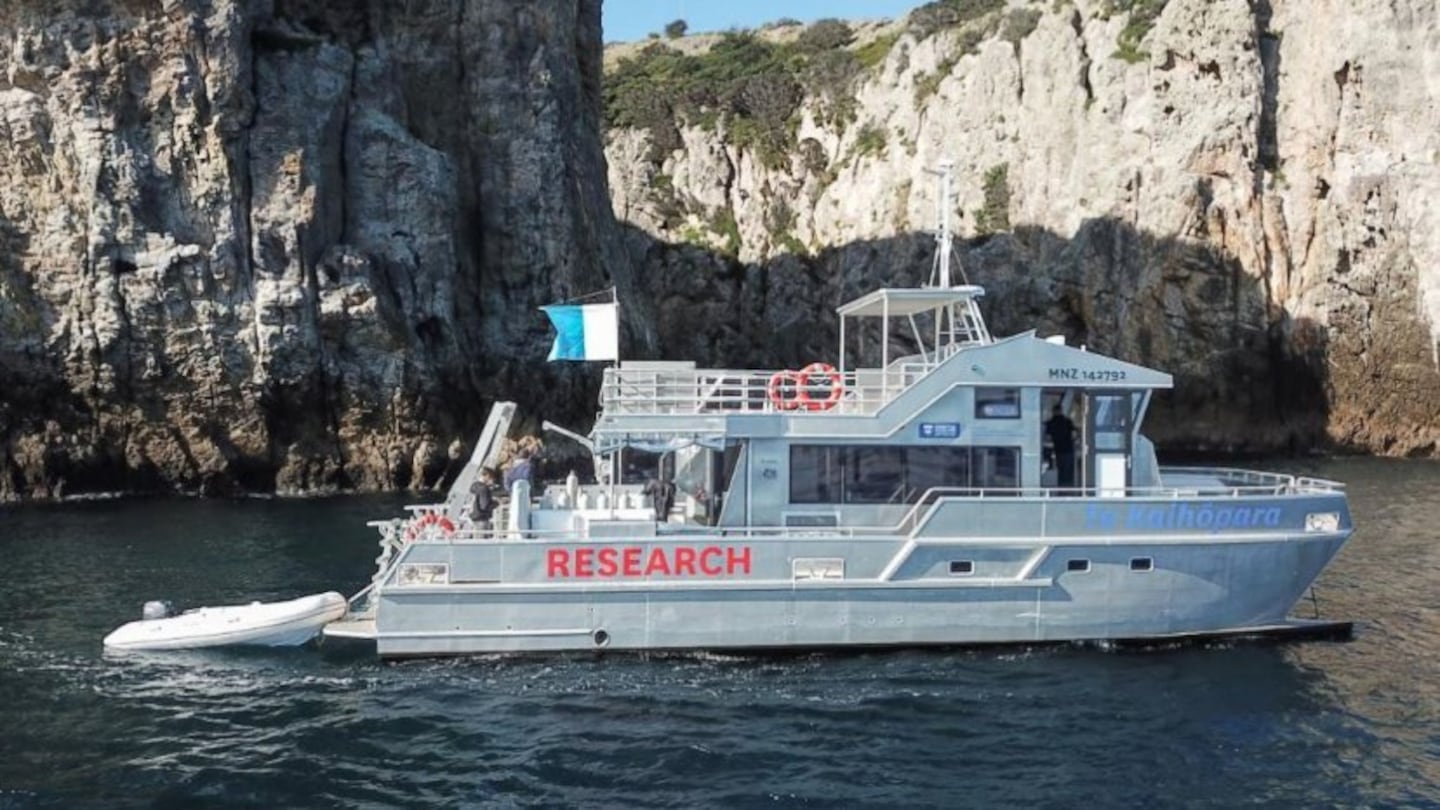Te Kaihōpara at Mokohinau Islands. Photo / Hayley Nessia
Ngāti Manuhiri's efforts to revive the troubled marine environment of the Hauraki Gulf have received a boost with the launch this week of a multi-million-dollar marine research vessel, Te Kaihōpara (The Explorer).
The 15.9-metre vessel will support environmental repair work and expand the research capabilities of Waipapa Taumata Rau, University of Auckland.
“Te Kaihōpara will spend much of her life working in Ngāti Manuhiri’s rohe moana and we look forward to working with all iwi to enhance the mauri of the Gulf and all marine environments,” Professor Simon Thrush, director of the university’s institute of marine science said in a statement.
Local iwi Ngāti Manuhiri, a partner in mussel reef restoration, gifted the name Te Kaihōpara.

Te Kaihōpara with part of Te Hawere a Maki (Goat Island) in the background. Photo / Supplied
Ngāti Manuhiri is working to try to re-establish mussel beds wiped out by overfishing last century alongside Revive Our Gulf, a collaboration between the University of Auckland, The Nature Conservancy and the Mussel Reef Restoration Trust.
The gulf has become less hospitable for sea creatures because of overfishing and sedimentation. Warming water is also leading species to shift locations, disrupting long-established food webs, and encouraging destructive newcomers such as long-spined sea urchins, Professor Thrush said.
The university’s marine research spans climate change, conservation and restoration, whales and dolphins, microplastics, noise pollution, sea birds, seafloor ecology, aquaculture, kelp and kina.
Te Kaihōpara will support projects such as researching the effectiveness of large-scale kina removals for restoring kelp forests and how boat noise stresses snapper and, more widely, the role of sound in the gulf. It will also assist research related to feeding groups of whales, dolphins, seabirds and rays.



